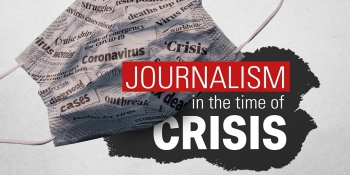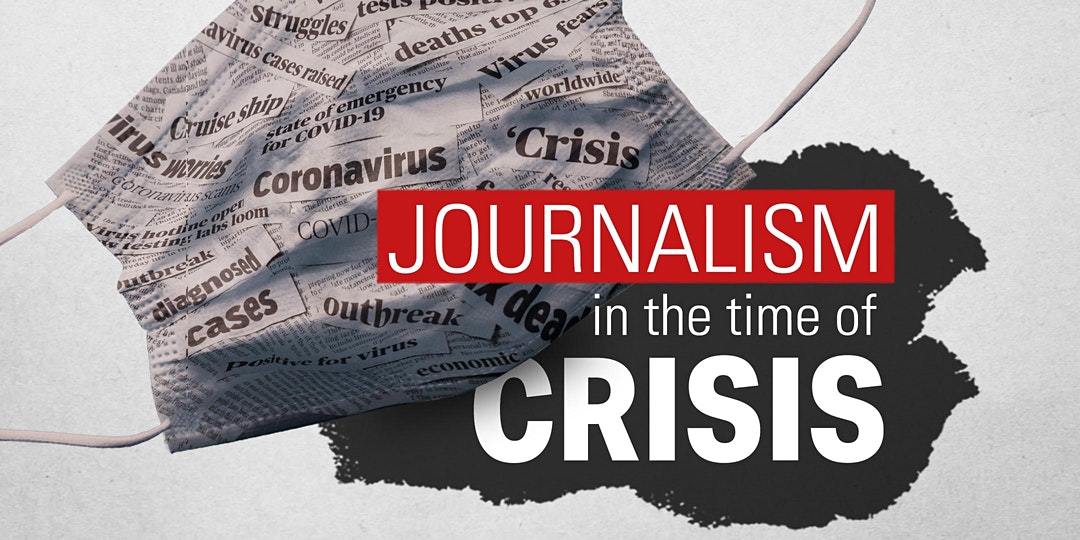
.png) John Dayal
John Dayal

The late Edatata Narayanan, my editor at the Patriot and Link at the cusp of the 1960s-70s, had a very few words, spoken in his gravelly but precise voice to define the relationship between a news reporter, the State, and the bit of information that needed to be conveyed to the reader. “I want my reporter in Police headquarters; not the police reporter in my newsrooms.”
It was a directive loaded with the truth of the times, and some eternal confrontations between Truth and Power. EN, as we called him behind his back, had reportedly covered a chunk of the Long March of Mao Tse Tung, had been targeted by the British Government, had worked with the editor son of MK Gandhi. He also despised corporate media, run by mill-owning industrialists and money bags. He called them the Jute Press. They, he said, served themselves, or political masters from whom they were seeking even more favours. Crony capitalists, as we call them now, and Godi-Media, as they are described in memes on the internet.
Those were heady times. The printing presses and journalism, were making the transition from the old – Independence was just twenty odd years earlier. It would be another decade and a half when the laptop would replace the clickety-clank of the typewriters. Senior correspondents, amongst them some of the most famous names in Indian journalism of the times, were still getting their “scoops” from friends in the Prime Minister’s office, or their third cousin who was the secretary in charge of some economic department. In some cases, they were just reproducing the press note given them a day in advance by some maker of cloth, steel, rubber, or automobiles. Some were qui in the pay of the ruling party, or the police.
Younger blood, with angry editors behind them, were exploring their nascent wings, going not to the mill owner but to the worker who had not got his pay. They were moving to the forests inhabited by Adivasis who were also beginning their struggle against the robbery of the trees, the hills, the water, and the mineral wealth under the soil.
In an industrial strike, reporters were no longer writing “The police were forced to open fire.’ Having talked to the workers and villagers, the report read “The police FIRED on the striking workers”. A small, barely noticeable, change of verb, and a victory was scored for Truth.
In such small editorial exercises was born what would in time be called “Investigative Journalism”, based on not accepting the handout or the “planted news”, and seeing through fakery, deceit and subterfuge. That is how there would be a truthful account of the Emergency of 1975, of the massacre of the Sikhs in 1984, the demolition of the Babri Masjid in 1992, and the massacre of Muslims in 2002 in Gujarat. Kandhamal, in Orissa, the largest pogrom against the Christian community in India, was in line with this, as was the Bhopal Gas accident resulting in a record number of killed, maimed and genetically impacted outside of a nuclear explosion or meltdown.
Surely this was precisely what Pope Francis was talking about in his now celebrated 2021World Communications Day Message in which he called on journalists to “hit the streets” and go beyond “reportage created in newsrooms”. This, of course, would be not possible unless “journalists were willing to go where no one goes and had a desire to see things for themselves – a curiosity, an openness, a passion.”
This, in a country such as India, is not an easy task. Many things come in the way – the economics of journalism and the disparities in non-inclusive and sharply striated newsrooms, the pattern of ownership and the rise of monopolies, an increasingly dictatorial state and narcissistic political leaders with powers over the instruments of state such as police and lower judiciary that even Indira Gandhi at her most dictatorial never could have.
Indian journalists work in the most harsh and undemocratic environment. There are very few Dalits in positions of assertion in the newsroom, fewer Adivasis, and women Editors can still be counted on the fingers of two hands. Muslims, Dalit Christians and children of peasants can seldom aspire to be a senior correspondent. And salaries can range from 5,000 Indian rupees a month to a mofussil or district stringer to Rs 500,000 a month for editors in the TV channels. And the newspaper company washes its hands off any accident, health crisis or run-in with the police or the administration.
They could be supportive if they wanted to, but the managements want to be on the right side of the government. India’s richest man, and its biggest industrialist, owns maybe a third of the Indian media including television networks in multiple languages. The others too are monopolies in a descending order. Independent newspapers have been reduced to small city or state journals, or channels on internet, YouTube or Blogs. Famous newspapers of East India and South India have bowed, bent, gone prostate, or just buried their heads in the sand. Few exceptions, if any.
It is not for anyone, including this columnist, to apportion blame. It is a dangerous world out there. Not just for the media company’s bottom line, but for life and limb. Threats can range from a beating to a rape, maiming to beheading.
India is at number 142 out of 180 countries assessed for the on the most recent World Press Freedom Index. Reporters Without Borders lists India in the category of countries considered ‘bad’ for journalism. It is no consolation that Pakistan, China and some Latin American countries are worse than India.
With “four journalists killed in connection with their work in 2020, and at least two so far in 2021, India is one of the world’s most dangerous countries for journalists trying to do their job properly, the report says. It highlights curbs on freedom of ex
Who should know it better than the Editors’ Guild of India which I had the honour of serving as Treasurer in the 1990s, and as an invitee on the Executive in 2020 and 2021.
The various statements of the EGI are a litany of assaults on the media. A statement on October 5, 2021 said it was shocked by the death of Raman Kashyap, a TV journalist who was reporting on Lakhimpur Kheri’s farmers protest in Uttar Pradesh on October 3. The man was shot dead, reportedly by henchmen of a federal functionary. Other issues it documented, and condemned, were Income Tax “surveys” at the offices of news websites NewsClick.in and Newslaundry.com, the Dainik Bhaskar group, as well as a Lucknow based independent news channel, Bharat Samachar.
The worst-case scenario was the wide spread surveillance mounted by government agencies, on journalists, civil society activists, businessmen and politicians, using a hacking software known as Pegasus, created and developed by the Israeli company NSO.
Almost no Indian state is innocent of crimes against the freedom of the media. Most are brutal. Some verge on the insane.
How then do we follow the exhortation of Francis, our Pope? It is dark and dangerous out there. No doubt about it. And it even on normal days is beyond the call of duty. More than 100 reporters died of Covid covering the plight of others, including the millions of jobless persons trudging home. It is a tenth of the number of clergy and religious killed by Covid while working with the people. But for the men and women of the Cloth, it was a mission, not a job. Even to the most committed journalist in the secular world, the media is both a mission and a source of livelihood. There always will be a paymaster. And there also will be fear.
For those in the Catholic Church, there is strength in the protection of the Holy Spirit, as much as there is solidarity in the faith community. That is the raison d’etre of the Indian Catholic Press Association, or should be. Holding hands, praying for each other, and helping the weakest and the youngest in any way we can, upholding them, helping them get mid-career training, refresher courses, scholarships and fellowships is one way. Collectively they hone the professionalism, even as they nurture conscience and spirit. Much of the Catholic media is diocese or congregation owned. But it is free within the chains of its proprietorship.
It is perhaps too much to pray for a collective of all catholic journalists, in partnership with diocesan bishops and congregations, to set up a media company with print, online and social media and Blog platforms. Difficult, but not impossible.
That could possibly be a real and collective response to the Pope’s media message.
In his 51 years in journalism, John Dayal has been sub-editor, crime reporter, war correspondent, foreign correspondent, editor-in-chief, media professor, analyst, author of celebrated books, film critic and documentary film maker. He is also a renowned Human Rights activist.
He can be contacted at: john.dayal@gmail.com